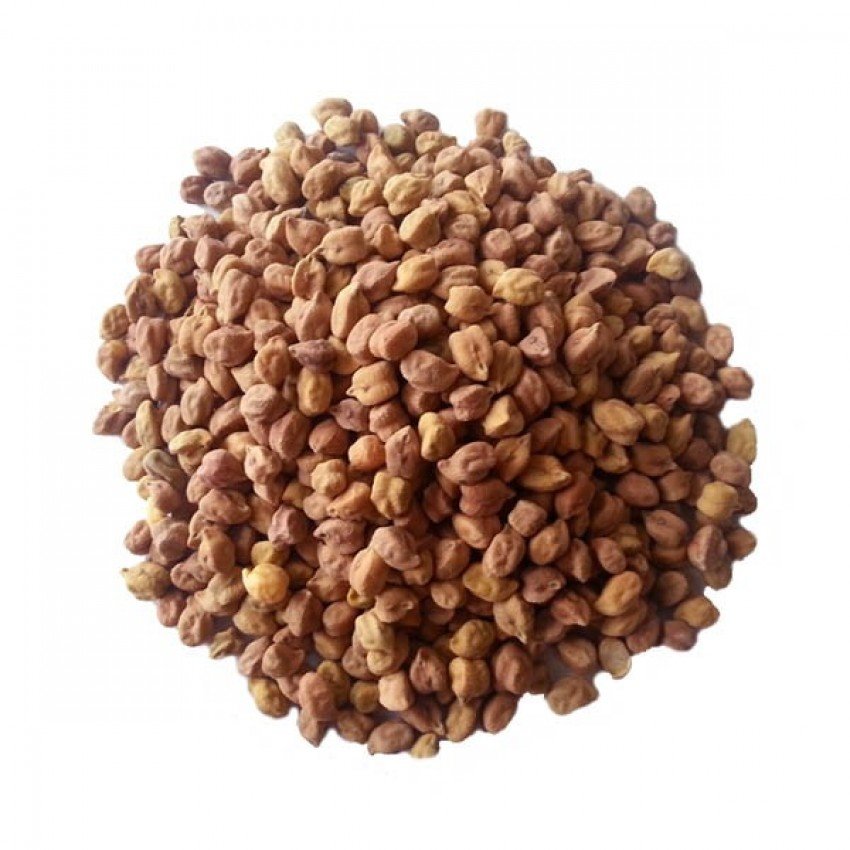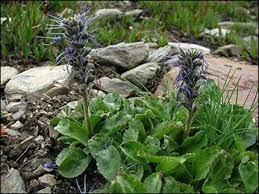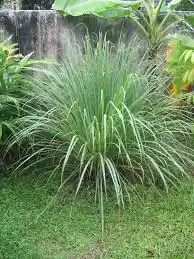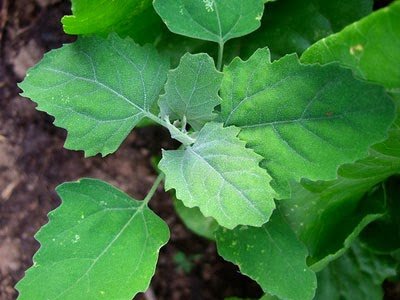Kala Chana Nutrition Requirements
Nutrition required by Kala Chana at each stage of its life cycle.
SOIL PREPARATION

Soil Preparation
Soil Preparation Method for Bengal Gram (Kala Chana):
1. **Site Selection**: Choose a site with well-draining soil and adequate sunlight exposure. Bengal gram thrives in loamy or sandy loam soils with a pH range of 6.0 to 7.5.
2. **Land Preparation**: Prepare the land by plowing and harrowing to loosen the soil and remove any debris. Ensure proper leveling of the field to facilitate uniform water distribution.
3. **Soil Testing**: Conduct a soil test to determine nutrient levels and pH. Based on the results, amend the soil with organic matter or fertilizers as needed to optimize nutrient availability.
4. **Weed Control**: Clear the field of weeds either manually or by using herbicides. Weed competition can significantly reduce Bengal gram yields.
5. **Seedbed Preparation**: Create seedbeds by breaking down large soil clumps and creating fine tilth. This promotes good seed-to-soil contact and enhances germination.
Nutrition Requirements at Soil Preparation Stage for Bengal Gram:
1. **Nitrogen (N)**: Bengal gram requires nitrogen for vegetative growth and overall plant development. Incorporate nitrogen-rich organic matter such as compost or well-decomposed manure into the soil before planting.
2. **Phosphorus (P)**: Phosphorus is essential for root development and early plant establishment. Apply phosphorus fertilizers such as single superphosphate (SSP) or diammonium phosphate (DAP) according to soil test recommendations.
3. **Potassium (K)**: Potassium aids in improving plant vigor, disease resistance, and stress tolerance. Add potassium fertilizers like muriate of potash (MOP) or potassium sulfate (SOP) based on soil test results.
4. **Micronutrients**: Ensure the availability of essential micronutrients like zinc, iron, manganese, and copper by either incorporating micronutrient-rich organic matter or applying micronutrient fertilizers as recommended based on soil analysis.
5. **Organic Matter**: Incorporating organic matter into the soil not only improves soil structure but also enhances nutrient retention and microbial activity, which are crucial for healthy plant growth.
6. **pH Adjustment**: Bengal gram prefers slightly acidic to neutral soil pH. If the soil pH is too low or too high, amend it accordingly using lime to raise pH or elemental sulfur to lower pH to the optimal range.
By following these soil preparation methods and meeting the nutritional requirements, you can create an ideal growing environment for Bengal gram, leading to healthy plant growth and higher yields.
Early Growth (Germination to Establishment)

Early Growth
During the early growth stage (germination to establishment) of Bengal gram (Kala Chana), the plant has specific nutritional requirements to support its growth and development.
Here are the key nutrients needed during this stage:
1. **Nitrogen (N)**: Nitrogen is essential for the development of healthy foliage and early vegetative growth. It promotes the synthesis of proteins, enzymes, and chlorophyll, crucial for photosynthesis and overall plant vigor.
2. **Phosphorus (P)**: Phosphorus is vital for root development, energy transfer, and early establishment of the plant. It plays a key role in promoting root growth, improving seedling vigor, and enhancing flowering and fruiting later in the growth cycle.
3. **Potassium (K)**: Potassium is important for water and nutrient uptake, enzyme activation, and overall plant metabolism. It contributes to disease resistance, stress tolerance, and improved yield quality.
4. **Micronutrients**: During the early growth stage, micronutrients such as zinc, iron, manganese, and copper are crucial for enzymatic functions, chlorophyll synthesis, and various metabolic processes. Deficiencies in micronutrients can lead to stunted growth, reduced yields, and susceptibility to diseases.
5. **Calcium (Ca) and Magnesium (Mg)**: These secondary nutrients play essential roles in cell wall structure, enzyme activation, and nutrient uptake. They are particularly important during the early growth stage for ensuring proper cell division and plant structure.
6. **Sulfur (S)**: Sulfur is necessary for the synthesis of amino acids, proteins, and vitamins essential for plant growth. It contributes to overall plant health and helps in nitrogen utilization.
7. **Water**: While not a nutrient in the traditional sense, water is crucial for the early growth stage of Bengal gram. Adequate soil moisture is necessary for seed germination, root establishment, and nutrient uptake.
To ensure optimal growth during the early growth stage, it's important to provide Bengal gram plants with a balanced fertilizer regimen that meets these nutritional requirements. This may involve applying a combination of organic amendments and mineral fertilizers based on soil test results and specific crop needs. Additionally, proper irrigation management and weed control are essential to support early growth and establishment of Bengal gram plants.
Tillering Stage (Shoot Development)

Tillering Stage
During the tillering stage, also known as shoot development stage, Bengal gram (Kala Chana) requires specific nutrients to support the growth and development of shoots and tillers.
Here are the key nutritional requirements during this stage:
1. **Nitrogen (N)**: Nitrogen is essential for promoting vigorous shoot growth and tiller development during the tillering stage. It plays a crucial role in the synthesis of proteins, enzymes, and chlorophyll, which are necessary for photosynthesis and overall plant growth.
2. **Phosphorus (P)**: Phosphorus is important for promoting strong root development, which in turn supports the growth of healthy shoots and tillers. It aids in energy transfer, root elongation, and nutrient uptake, contributing to overall plant vigor.
3. **Potassium (K)**: Potassium is vital for maintaining turgor pressure in cells, which is necessary for cell elongation and shoot growth. It also enhances disease resistance, stress tolerance, and improves overall plant health during the tillering stage.
4. **Magnesium (Mg)**: Magnesium is a constituent of chlorophyll and is essential for photosynthesis. It plays a crucial role in the activation of enzymes involved in carbohydrate metabolism and energy transfer, supporting shoot growth and tiller development.
5. **Sulfur (S)**: Sulfur is required for the synthesis of amino acids, proteins, and vitamins essential for shoot development and overall plant growth. It contributes to the structural integrity of proteins and enzymes involved in various metabolic processes.
6. **Micronutrients**: Micronutrients such as zinc, iron, manganese, and copper are necessary for enzyme activation, chlorophyll synthesis, and other metabolic functions essential for shoot development and tillering. Deficiencies in micronutrients can lead to stunted growth and reduced tiller formation.
7. **Calcium (Ca)**: Calcium plays a role in cell division and cell elongation, which are important processes during shoot development and tillering. It also contributes to the structural integrity of cell walls, providing support to growing shoots and tillers.
To meet the nutritional requirements of Bengal gram during the tillering stage, it is important to provide balanced fertilization based on soil test results and crop nutrient requirements. This may involve the application of fertilizers containing nitrogen, phosphorus, potassium, magnesium, sulfur, and micronutrients in appropriate amounts to support healthy shoot growth and tiller development. Additionally, proper irrigation management and weed control are important for optimizing nutrient uptake and ensuring the successful establishment of tillers in Bengal gram crops.
Flowering

Flowering
During the flowering stage of Bengal gram (Kala Chana), the plant's nutritional requirements change as it shifts focus towards reproductive growth and the production of flowers and pods. Meeting these requirements is crucial for maximizing flower formation, pollination, and ultimately pod development.
Here are the key nutrients needed during the flowering stage:
1. **Phosphorus (P)**: Phosphorus is essential for flower formation and pollination. It plays a crucial role in energy transfer, promoting strong flower development, and ensuring successful pollination and fertilization. Adequate phosphorus availability during this stage supports the production of healthy flowers and improves pod set.
2. **Potassium (K)**: Potassium is important for flower and pod development in Bengal gram. It aids in carbohydrate translocation, water uptake, and osmoregulation, contributing to flower quality and seed formation. Potassium deficiency during flowering can lead to poor flower and pod set.
3. **Calcium (Ca)**: Calcium is essential for cell division and cell wall formation during flower development. It helps in maintaining cell integrity, improving flower structure, and reducing flower abortion. Calcium deficiency can result in poor flower quality and reduced pod set.
4. **Magnesium (Mg)**: Magnesium is a constituent of chlorophyll and plays a role in photosynthesis, which is crucial for providing energy during flower development and reproductive growth. Magnesium deficiency can lead to impaired flower formation and reduced seed set.
5. **Boron (B)**: Boron is essential for flower development, pollen germination, and seed formation. It plays a critical role in pollen tube elongation and fertilization, ensuring successful pollination and seed set. Boron deficiency can result in flower abortion and poor pod development.
6. **Manganese (Mn)**: Manganese is involved in enzyme activation and plays a role in pollen germination and pollen tube growth during flower development. It also contributes to photosynthesis and overall plant metabolism, supporting flower and pod development.
7. **Sulfur (S)**: Sulfur is necessary for protein synthesis and plays a role in flower coloration and aroma production. Adequate sulfur availability ensures proper flower development and enhances pollinator attraction.
8. **Iron (Fe)**: Iron is involved in chlorophyll synthesis and is essential for photosynthesis during flower development. It contributes to flower coloration and overall plant health during the flowering stage.
To meet the nutritional requirements of Bengal gram during the flowering stage, it is important to provide balanced fertilization based on soil test results and crop nutrient requirements. This may involve the application of fertilizers containing phosphorus, potassium, calcium, magnesium, boron, manganese, sulfur, and iron in appropriate amounts to support healthy flower and pod development. Additionally, proper irrigation management and pest control are important for optimizing nutrient uptake and ensuring successful flower and pod formation in Bengal gram crops.
Matchuration & Ripening

Matchuration & Ripening
During the maturation and ripening stage of Bengal gram (Kala Chana), the plant undergoes significant physiological changes as it prepares for seed development and maturation. Meeting the nutritional requirements during this stage is crucial for promoting seed filling, maturation, and achieving optimal yield and quality.
Here are the key nutrients needed during the maturation and ripening stage:
1. **Potassium (K)**: Potassium plays a critical role in seed filling and maturation in Bengal gram. It is involved in osmoregulation, maintaining cell turgor pressure, and promoting nutrient translocation to developing seeds. Adequate potassium availability during this stage enhances seed size, weight, and quality.
2. **Phosphorus (P)**: Phosphorus is essential for seed maturation and energy transfer during seed filling. It supports the synthesis of adenosine triphosphate (ATP) and nucleic acids, which are vital for seed development and maturation. Adequate phosphorus availability during this stage ensures proper seed filling and promotes seed vigor.
3. **Calcium (Ca)**: Calcium is important for cell wall development and seed coat formation during seed maturation. It contributes to seed quality by enhancing seed coat integrity and reducing susceptibility to diseases and storage disorders. Adequate calcium availability during this stage improves seed vigor and storability.
4. **Magnesium (Mg)**: Magnesium is involved in enzyme activation and plays a role in photosynthesis and carbohydrate metabolism during seed filling and maturation. It contributes to seed quality by promoting the accumulation of storage reserves and enhancing seed vigor.
5. **Sulfur (S)**: Sulfur is necessary for protein synthesis and contributes to seed protein content during seed filling and maturation. It plays a role in the formation of sulfur-containing amino acids, which are essential for seed quality and nutritional value. Adequate sulfur availability during this stage enhances seed protein content and quality.
6. **Micronutrients**: Micronutrients such as zinc, iron, manganese, and copper are important for seed filling and maturation. They are involved in enzyme activation, chlorophyll synthesis, and overall plant metabolism, supporting seed development and quality.
7. **Water**: While not a nutrient in the traditional sense, water is crucial for seed filling, maturation, and the maintenance of seed quality during the ripening stage. Adequate soil moisture is necessary to support seed development and ensure optimal seed filling and maturation.
To meet the nutritional requirements of Bengal gram during the maturation and ripening stage, it is important to provide balanced fertilization based on soil test results and crop nutrient requirements. This may involve the application of fertilizers containing potassium, phosphorus, calcium, magnesium, sulfur, and micronutrients in appropriate amounts to support seed filling, maturation, and achieve optimal seed yield and quality. Additionally, proper irrigation management and pest control are important for optimizing nutrient uptake and ensuring successful seed maturation and ripening in Bengal gram crops.
Harvesting

Harvesting
During the harvesting stage of Bengal gram (Kala Chana), proper nutrition management and procedures are essential to ensure optimal yield and quality of the harvested crop.
Here are the key aspects to consider:
Nutrition Requirements:
1. **Potassium (K)**: Potassium plays a crucial role in the maturation and ripening of Bengal gram pods. Adequate potassium availability during the harvesting stage promotes pod filling, enhances seed quality, and contributes to higher yields.
2. **Phosphorus (P)**: Phosphorus supports seed development and maturation, contributing to seed quality during the harvesting stage. It is important to maintain adequate phosphorus levels to ensure optimal seed filling and yield.
3. **Calcium (Ca)**: Calcium is important for seed coat integrity and seed quality during the harvesting stage. Adequate calcium availability contributes to better seed storability and reduces susceptibility to storage disorders.
4. **Magnesium (Mg)**: Magnesium is involved in photosynthesis and carbohydrate metabolism during seed filling and maturation. Ensuring sufficient magnesium levels supports seed development and quality during the harvesting stage.
5. **Sulfur (S)**: Sulfur contributes to seed protein content and quality during the harvesting stage. Adequate sulfur availability enhances seed nutritional value and contributes to better yield.
Harvesting Procedures:
1. **Timing**: Harvest Bengal gram when the pods have reached physiological maturity. The pods should be firm and fully developed, with a yellowish-brown color indicating maturity. Delayed harvesting can lead to pod shattering and yield loss.
2. **Desiccation**: In some cases, desiccation may be applied to facilitate uniform ripening and drying of the crop before harvesting. Desiccation helps in synchronizing pod maturity and simplifies harvesting operations.
3. **Mechanical Harvesting**: Bengal gram can be mechanically harvested using combine harvesters equipped with appropriate attachments for pulse crops. Mechanical harvesting can increase efficiency and reduce labor costs, especially for large-scale operations.
4. **Manual Harvesting**: In small-scale or traditional farming systems, Bengal gram is often harvested manually by cutting the plants close to the ground using sickles or other hand tools. The harvested plants are then collected and threshed to separate the seeds from the pods.
5. **Drying**: After harvesting, the Bengal gram pods should be dried promptly to reduce moisture content and prevent post-harvest losses due to mold or decay. Spread the harvested pods in a well-ventilated area and allow them to dry thoroughly before further processing or storage.
6. **Storage**: Store the harvested Bengal gram seeds in clean, dry containers to prevent moisture absorption and pest infestation. Proper storage conditions help maintain seed quality and viability for extended periods.
By following these nutrition management practices and harvesting procedures, farmers can optimize Bengal gram yield, quality, and post-harvest handling, ensuring a successful harvest and storage of the crop.
Kala Chana Farming Economics
Get details of Profitability and cost estimate in growing Kala Chana per acres of Land.
SOIL PREPARATION

Soil Preparation
Soil preparation is a crucial step in wheat cultivation, as it directly affects the crop's growth and yield. Here are the soil preparation methods and nutrition requirements at the soil preparation stage for wheat:
Soil Preparation Method:
Land Preparation: Plow the field to break the soil and turn it over. Use a disc harrow or cultivator to further break down clods and level the soil. Ensure proper seedbed preparation by creating a fine, well-tilled soil surface.
Seedbed Preparation: Level the field to provide a uniform surface for planting. Use a roller or a harrow to firm up the soil to facilitate seed-to-soil contact. Remove any weeds or crop residues from the previous season to reduce competition with the wheat crop.
Seed Rate and Sowing: Determine the appropriate seed rate based on the variety and local recommendations. Use a suitable seed drill for uniform and precise sowing. Ensure proper seed depth according to recommended guidelines.
Fertilization: Apply a balanced fertilizer based on soil nutrient analysis and regional recommendations. Incorporate fertilizers into the soil during seedbed preparation. Consider applying phosphorus and potassium along with nitrogen for optimal wheat growth.
Organic Matter: Incorporate well-rotted organic matter, such as compost or manure, into the soil. Organic matter enhances soil structure, water retention, and nutrient availability.
pH Adjustment: Check and adjust soil pH to the recommended range for wheat cultivation (typically around 6.0 to 7.5). Lime may be added to raise pH, and sulfur may be added to lower pH as needed.
Nutrition Requirement at Soil Preparation Stage: Nitrogen (N): Nitrogen is essential for vegetative growth and is crucial during the early stages of wheat development. Apply nitrogen fertilizer during soil preparation to provide an initial boost to the crop.
Phosphorus (P): Phosphorus is vital for root development and early plant establishment. Apply phosphorus-containing fertilizers, such as diammonium phosphate (DAP), during soil preparation.
Potassium (K): Potassium supports overall plant health, disease resistance, and drought tolerance. Apply potassium-containing fertilizers, such as potassium chloride (Muriate of Potash), during soil preparation.
Micronutrients: Consider incorporating micronutrients like zinc, copper, and boron based on soil testing results. Micronutrients play essential roles in enzyme activities and overall plant health.
Organic Matter: Organic matter contributes to nutrient availability and improves the soil's water-holding capacity. Ensure a good supply of organic matter through the incorporation of well-decomposed compost or manure.
Soil pH: Adjust soil pH to the recommended range for wheat cultivation to optimize nutrient uptake by the plants.
Microbial Activity: Encourage beneficial microbial activity in the soil by incorporating organic matter. Healthy soil microbial communities contribute to nutrient cycling and availability.
Water Management: Ensure proper drainage to prevent waterlogging, which can negatively impact nutrient uptake. Irrigate if necessary to maintain adequate soil moisture during wheat establishment.
Early Growth (Germination to Establishment)

Early Growth
Soil preparation is a crucial step in wheat cultivation, as it directly affects the crop's growth and yield. Here are the soil preparation methods and nutrition requirements at the soil preparation stage for wheat:
Soil Preparation Method:
Land Preparation: Plow the field to break the soil and turn it over. Use a disc harrow or cultivator to further break down clods and level the soil. Ensure proper seedbed preparation by creating a fine, well-tilled soil surface.
Seedbed Preparation: Level the field to provide a uniform surface for planting. Use a roller or a harrow to firm up the soil to facilitate seed-to-soil contact. Remove any weeds or crop residues from the previous season to reduce competition with the wheat crop.
Seed Rate and Sowing: Determine the appropriate seed rate based on the variety and local recommendations. Use a suitable seed drill for uniform and precise sowing. Ensure proper seed depth according to recommended guidelines.
Fertilization: Apply a balanced fertilizer based on soil nutrient analysis and regional recommendations. Incorporate fertilizers into the soil during seedbed preparation. Consider applying phosphorus and potassium along with nitrogen for optimal wheat growth.
Organic Matter: Incorporate well-rotted organic matter, such as compost or manure, into the soil. Organic matter enhances soil structure, water retention, and nutrient availability.
pH Adjustment: Check and adjust soil pH to the recommended range for wheat cultivation (typically around 6.0 to 7.5). Lime may be added to raise pH, and sulfur may be added to lower pH as needed.
Nutrition Requirement at Soil Preparation Stage: Nitrogen (N): Nitrogen is essential for vegetative growth and is crucial during the early stages of wheat development. Apply nitrogen fertilizer during soil preparation to provide an initial boost to the crop.
Phosphorus (P): Phosphorus is vital for root development and early plant establishment. Apply phosphorus-containing fertilizers, such as diammonium phosphate (DAP), during soil preparation.
Potassium (K): Potassium supports overall plant health, disease resistance, and drought tolerance. Apply potassium-containing fertilizers, such as potassium chloride (Muriate of Potash), during soil preparation.
Micronutrients: Consider incorporating micronutrients like zinc, copper, and boron based on soil testing results. Micronutrients play essential roles in enzyme activities and overall plant health.
Organic Matter: Organic matter contributes to nutrient availability and improves the soil's water-holding capacity. Ensure a good supply of organic matter through the incorporation of well-decomposed compost or manure.
Soil pH: Adjust soil pH to the recommended range for wheat cultivation to optimize nutrient uptake by the plants.
Microbial Activity: Encourage beneficial microbial activity in the soil by incorporating organic matter. Healthy soil microbial communities contribute to nutrient cycling and availability.
Water Management: Ensure proper drainage to prevent waterlogging, which can negatively impact nutrient uptake. Irrigate if necessary to maintain adequate soil moisture during wheat establishment.
Tillering Stage (Shoot Development)

Tillering Stage
Soil preparation is a crucial step in wheat cultivation, as it directly affects the crop's growth and yield. Here are the soil preparation methods and nutrition requirements at the soil preparation stage for wheat:
Soil Preparation Method:
Land Preparation: Plow the field to break the soil and turn it over. Use a disc harrow or cultivator to further break down clods and level the soil. Ensure proper seedbed preparation by creating a fine, well-tilled soil surface.
Seedbed Preparation: Level the field to provide a uniform surface for planting. Use a roller or a harrow to firm up the soil to facilitate seed-to-soil contact. Remove any weeds or crop residues from the previous season to reduce competition with the wheat crop.
Seed Rate and Sowing: Determine the appropriate seed rate based on the variety and local recommendations. Use a suitable seed drill for uniform and precise sowing. Ensure proper seed depth according to recommended guidelines.
Fertilization: Apply a balanced fertilizer based on soil nutrient analysis and regional recommendations. Incorporate fertilizers into the soil during seedbed preparation. Consider applying phosphorus and potassium along with nitrogen for optimal wheat growth.
Organic Matter: Incorporate well-rotted organic matter, such as compost or manure, into the soil. Organic matter enhances soil structure, water retention, and nutrient availability.
pH Adjustment: Check and adjust soil pH to the recommended range for wheat cultivation (typically around 6.0 to 7.5). Lime may be added to raise pH, and sulfur may be added to lower pH as needed.
Nutrition Requirement at Soil Preparation Stage: Nitrogen (N): Nitrogen is essential for vegetative growth and is crucial during the early stages of wheat development. Apply nitrogen fertilizer during soil preparation to provide an initial boost to the crop.
Phosphorus (P): Phosphorus is vital for root development and early plant establishment. Apply phosphorus-containing fertilizers, such as diammonium phosphate (DAP), during soil preparation.
Potassium (K): Potassium supports overall plant health, disease resistance, and drought tolerance. Apply potassium-containing fertilizers, such as potassium chloride (Muriate of Potash), during soil preparation.
Micronutrients: Consider incorporating micronutrients like zinc, copper, and boron based on soil testing results. Micronutrients play essential roles in enzyme activities and overall plant health.
Organic Matter: Organic matter contributes to nutrient availability and improves the soil's water-holding capacity. Ensure a good supply of organic matter through the incorporation of well-decomposed compost or manure.
Soil pH: Adjust soil pH to the recommended range for wheat cultivation to optimize nutrient uptake by the plants.
Microbial Activity: Encourage beneficial microbial activity in the soil by incorporating organic matter. Healthy soil microbial communities contribute to nutrient cycling and availability.
Water Management: Ensure proper drainage to prevent waterlogging, which can negatively impact nutrient uptake. Irrigate if necessary to maintain adequate soil moisture during wheat establishment.
Flowering

Flowering
Soil preparation is a crucial step in wheat cultivation, as it directly affects the crop's growth and yield. Here are the soil preparation methods and nutrition requirements at the soil preparation stage for wheat:
Soil Preparation Method:
Land Preparation: Plow the field to break the soil and turn it over. Use a disc harrow or cultivator to further break down clods and level the soil. Ensure proper seedbed preparation by creating a fine, well-tilled soil surface.
Seedbed Preparation: Level the field to provide a uniform surface for planting. Use a roller or a harrow to firm up the soil to facilitate seed-to-soil contact. Remove any weeds or crop residues from the previous season to reduce competition with the wheat crop.
Seed Rate and Sowing: Determine the appropriate seed rate based on the variety and local recommendations. Use a suitable seed drill for uniform and precise sowing. Ensure proper seed depth according to recommended guidelines.
Fertilization: Apply a balanced fertilizer based on soil nutrient analysis and regional recommendations. Incorporate fertilizers into the soil during seedbed preparation. Consider applying phosphorus and potassium along with nitrogen for optimal wheat growth.
Organic Matter: Incorporate well-rotted organic matter, such as compost or manure, into the soil. Organic matter enhances soil structure, water retention, and nutrient availability.
pH Adjustment: Check and adjust soil pH to the recommended range for wheat cultivation (typically around 6.0 to 7.5). Lime may be added to raise pH, and sulfur may be added to lower pH as needed.
Nutrition Requirement at Soil Preparation Stage: Nitrogen (N): Nitrogen is essential for vegetative growth and is crucial during the early stages of wheat development. Apply nitrogen fertilizer during soil preparation to provide an initial boost to the crop.
Phosphorus (P): Phosphorus is vital for root development and early plant establishment. Apply phosphorus-containing fertilizers, such as diammonium phosphate (DAP), during soil preparation.
Potassium (K): Potassium supports overall plant health, disease resistance, and drought tolerance. Apply potassium-containing fertilizers, such as potassium chloride (Muriate of Potash), during soil preparation.
Micronutrients: Consider incorporating micronutrients like zinc, copper, and boron based on soil testing results. Micronutrients play essential roles in enzyme activities and overall plant health.
Organic Matter: Organic matter contributes to nutrient availability and improves the soil's water-holding capacity. Ensure a good supply of organic matter through the incorporation of well-decomposed compost or manure.
Soil pH: Adjust soil pH to the recommended range for wheat cultivation to optimize nutrient uptake by the plants.
Microbial Activity: Encourage beneficial microbial activity in the soil by incorporating organic matter. Healthy soil microbial communities contribute to nutrient cycling and availability.
Water Management: Ensure proper drainage to prevent waterlogging, which can negatively impact nutrient uptake. Irrigate if necessary to maintain adequate soil moisture during wheat establishment.
Matchuration & Ripening

Matchuration & Ripening
Soil preparation is a crucial step in wheat cultivation, as it directly affects the crop's growth and yield. Here are the soil preparation methods and nutrition requirements at the soil preparation stage for wheat:
Soil Preparation Method:
Land Preparation: Plow the field to break the soil and turn it over. Use a disc harrow or cultivator to further break down clods and level the soil. Ensure proper seedbed preparation by creating a fine, well-tilled soil surface.
Seedbed Preparation: Level the field to provide a uniform surface for planting. Use a roller or a harrow to firm up the soil to facilitate seed-to-soil contact. Remove any weeds or crop residues from the previous season to reduce competition with the wheat crop.
Seed Rate and Sowing: Determine the appropriate seed rate based on the variety and local recommendations. Use a suitable seed drill for uniform and precise sowing. Ensure proper seed depth according to recommended guidelines.
Fertilization: Apply a balanced fertilizer based on soil nutrient analysis and regional recommendations. Incorporate fertilizers into the soil during seedbed preparation. Consider applying phosphorus and potassium along with nitrogen for optimal wheat growth.
Organic Matter: Incorporate well-rotted organic matter, such as compost or manure, into the soil. Organic matter enhances soil structure, water retention, and nutrient availability.
pH Adjustment: Check and adjust soil pH to the recommended range for wheat cultivation (typically around 6.0 to 7.5). Lime may be added to raise pH, and sulfur may be added to lower pH as needed.
Nutrition Requirement at Soil Preparation Stage: Nitrogen (N): Nitrogen is essential for vegetative growth and is crucial during the early stages of wheat development. Apply nitrogen fertilizer during soil preparation to provide an initial boost to the crop.
Phosphorus (P): Phosphorus is vital for root development and early plant establishment. Apply phosphorus-containing fertilizers, such as diammonium phosphate (DAP), during soil preparation.
Potassium (K): Potassium supports overall plant health, disease resistance, and drought tolerance. Apply potassium-containing fertilizers, such as potassium chloride (Muriate of Potash), during soil preparation.
Micronutrients: Consider incorporating micronutrients like zinc, copper, and boron based on soil testing results. Micronutrients play essential roles in enzyme activities and overall plant health.
Organic Matter: Organic matter contributes to nutrient availability and improves the soil's water-holding capacity. Ensure a good supply of organic matter through the incorporation of well-decomposed compost or manure.
Soil pH: Adjust soil pH to the recommended range for wheat cultivation to optimize nutrient uptake by the plants.
Microbial Activity: Encourage beneficial microbial activity in the soil by incorporating organic matter. Healthy soil microbial communities contribute to nutrient cycling and availability.
Water Management: Ensure proper drainage to prevent waterlogging, which can negatively impact nutrient uptake. Irrigate if necessary to maintain adequate soil moisture during wheat establishment.
Harvesting

Harvesting
Soil preparation is a crucial step in wheat cultivation, as it directly affects the crop's growth and yield. Here are the soil preparation methods and nutrition requirements at the soil preparation stage for wheat:
Soil Preparation Method:
Land Preparation: Plow the field to break the soil and turn it over. Use a disc harrow or cultivator to further break down clods and level the soil. Ensure proper seedbed preparation by creating a fine, well-tilled soil surface.
Seedbed Preparation: Level the field to provide a uniform surface for planting. Use a roller or a harrow to firm up the soil to facilitate seed-to-soil contact. Remove any weeds or crop residues from the previous season to reduce competition with the wheat crop.
Seed Rate and Sowing: Determine the appropriate seed rate based on the variety and local recommendations. Use a suitable seed drill for uniform and precise sowing. Ensure proper seed depth according to recommended guidelines.
Fertilization: Apply a balanced fertilizer based on soil nutrient analysis and regional recommendations. Incorporate fertilizers into the soil during seedbed preparation. Consider applying phosphorus and potassium along with nitrogen for optimal wheat growth.
Organic Matter: Incorporate well-rotted organic matter, such as compost or manure, into the soil. Organic matter enhances soil structure, water retention, and nutrient availability.
pH Adjustment: Check and adjust soil pH to the recommended range for wheat cultivation (typically around 6.0 to 7.5). Lime may be added to raise pH, and sulfur may be added to lower pH as needed.
Nutrition Requirement at Soil Preparation Stage: Nitrogen (N): Nitrogen is essential for vegetative growth and is crucial during the early stages of wheat development. Apply nitrogen fertilizer during soil preparation to provide an initial boost to the crop.
Phosphorus (P): Phosphorus is vital for root development and early plant establishment. Apply phosphorus-containing fertilizers, such as diammonium phosphate (DAP), during soil preparation.
Potassium (K): Potassium supports overall plant health, disease resistance, and drought tolerance. Apply potassium-containing fertilizers, such as potassium chloride (Muriate of Potash), during soil preparation.
Micronutrients: Consider incorporating micronutrients like zinc, copper, and boron based on soil testing results. Micronutrients play essential roles in enzyme activities and overall plant health.
Organic Matter: Organic matter contributes to nutrient availability and improves the soil's water-holding capacity. Ensure a good supply of organic matter through the incorporation of well-decomposed compost or manure.
Soil pH: Adjust soil pH to the recommended range for wheat cultivation to optimize nutrient uptake by the plants.
Microbial Activity: Encourage beneficial microbial activity in the soil by incorporating organic matter. Healthy soil microbial communities contribute to nutrient cycling and availability.
Water Management: Ensure proper drainage to prevent waterlogging, which can negatively impact nutrient uptake. Irrigate if necessary to maintain adequate soil moisture during wheat establishment.
Kala Chana Disease Details
Nutrition required by Kala Chana at each stage of its life cycle.
SOIL PREPARATION

Soil Preparation
During the soil preparation stage for Bengal gram cultivation, several diseases and pests can pose potential threats to crop establishment and subsequent growth.
Here are some common diseases and pests, along with precautions to prevent their occurrence:
1. **Damping-off**: Damping-off is a fungal disease caused by various soil-borne pathogens like Pythium and Rhizoctonia. It typically affects seedlings, causing them to rot at the base and collapse.
To prevent damping-off:
- Use disease-free seeds and avoid planting seeds from infected sources.
- Ensure proper drainage to avoid waterlogging, as excess moisture promotes fungal growth.
- Apply biocontrol agents or fungicides as preventive measures, following label instructions.
2. **Root Rot**: Root rot is caused by fungi like Fusarium and Phytophthora, which infect the roots and rot them, leading to stunted growth and wilting.
Preventive measures include:
- Plant Bengal gram in well-drained soils and avoid overwatering.
- Rotate crops to reduce the buildup of soil-borne pathogens.
- Treat seeds with fungicides before planting to reduce fungal infection.
3. **Seedling Blight**: Seedling blight is caused by various fungal pathogens, including Rhizoctonia solani and Fusarium spp., which infect seedlings and cause rotting of seeds and seedlings.
To prevent seedling blight:
- Use certified disease-free seeds and treat them with fungicides before planting.
- Maintain proper soil moisture and avoid overwatering, as excessive moisture favors fungal growth.
- Practice crop rotation to break disease cycles and reduce inoculum levels in the soil.
4. **Wireworms and Cutworms**: Wireworms and cutworms are common soil-dwelling pests that feed on Bengal gram seeds and seedlings, causing damage and reduced stand establishment.
Precautions to prevent infestation include:
- Conduct soil preparation early to expose wireworms and cutworms to predators and adverse environmental conditions.
- Use pheromone traps or bait stations to monitor pest populations and implement targeted control measures if necessary.
- Apply insecticidal seed treatments before planting to protect seeds from wireworm and cutworm damage.
5. **Nematodes**: Nematodes are microscopic roundworms that can infest Bengal gram roots, causing root galling, stunting, and yield loss.
To prevent nematode infestations:
- Practice crop rotation with non-host crops to reduce nematode populations in the soil.
- Use certified nematode-free seeds and treat them with nematicides before planting.
- Maintain soil health through organic matter addition and biological control measures to suppress nematode populations.
6. **Weeds**: Weed competition can reduce Bengal gram yield and quality.
To prevent weed infestations:
- Conduct thorough land preparation to remove existing weeds and weed seeds from the soil.
- Implement timely and effective weed control measures, including manual weeding, herbicide application, and mulching.
- Use pre-emergence herbicides before planting to control weed germination and establishment.
By implementing these precautions and integrated pest management practices during the soil preparation stage, farmers can effectively prevent diseases and pests in Bengal gram cultivation, leading to healthier crops and improved yields. Regular monitoring and timely interventions are essential for successful disease and pest management throughout the crop growth cycle.
Early Growth (Germination to Establishment)

Early Growing
During the early growth stage of Bengal gram (Kala Chana), several diseases and pests can pose threats to seedlings and young plants, potentially leading to reduced stand establishment and growth.
Here are some common diseases and pests that can occur during this stage, along with precautions to prevent their occurrence:
1. **Damping-off**: Damping-off is a fungal disease caused by various soil-borne pathogens like Pythium and Rhizoctonia. It typically affects seedlings, causing them to rot at the base and collapse.
To prevent damping-off:
- Use disease-free seeds from reputable sources.
- Treat seeds with fungicides before planting to reduce fungal infection.
- Ensure proper soil drainage to prevent waterlogging, as excess moisture promotes fungal growth.
- Avoid overcrowding of seedlings, as this can create favorable conditions for disease development.
2. **Seedling Blight**: Seedling blight is caused by various fungal pathogens, including Rhizoctonia solani and Fusarium spp., which infect seedlings and cause rotting of seeds and seedlings.
To prevent seedling blight:
- Use certified disease-free seeds and treat them with fungicides before planting.
- Maintain proper soil moisture levels to discourage fungal growth.
- Practice crop rotation to break disease cycles and reduce inoculum levels in the soil.
3. **Cutworms and Wireworms**: Cutworms and wireworms are common soil-dwelling pests that feed on Bengal gram seeds and seedlings, causing damage and reduced stand establishment.
To prevent infestation:
- Conduct early soil preparation to expose cutworms and wireworms to predators and adverse environmental conditions.
- Use pheromone traps or bait stations to monitor pest populations and implement targeted control measures if necessary.
- Apply insecticidal seed treatments before planting to protect seeds from cutworm and wireworm damage.
4. **Thrips and Aphids**: Thrips and aphids are sap-sucking insects that can infest young Bengal gram plants, causing stunted growth and yellowing of leaves.
To prevent infestation:
- Monitor plants regularly for signs of thrips and aphids and take timely action if detected.
- Use insecticidal sprays or natural predators to control thrips and aphid populations.
- Implement cultural practices such as intercropping or trap cropping to reduce pest pressure.
5. **Weeds**: Weed competition can hinder the growth of Bengal gram seedlings and reduce stand establishment.
To prevent weed infestations:
- Conduct thorough land preparation to remove existing weeds and weed seeds from the soil.
- Implement timely and effective weed control measures, including manual weeding, herbicide application, and mulching.
- Use pre-emergence herbicides before planting to control weed germination and establishment.
By implementing these precautions and integrated pest management practices during the early growth stage, farmers can effectively prevent diseases and pests in Bengal gram cultivation, ensuring healthy seedling establishment and robust plant growth. Regular monitoring and prompt interventions are essential for successful disease and pest management throughout the crop growth cycle.
Tillering Stage (Shoot Development)

Tillering Stage
During the tillering stage (shoot development) of Bengal gram (Kala Chana), several diseases and pests can pose threats to plant growth and development.
Here are some common diseases and pests that can occur during this stage, along with precautions to prevent their occurrence:
1. **Powdery Mildew**: Powdery mildew is a fungal disease caused by various species of the genus Erysiphe. It appears as a white powdery growth on leaves, stems, and pods, affecting photosynthesis and reducing plant vigor.
To prevent powdery mildew:
- Ensure proper spacing between plants to promote air circulation and reduce humidity levels.
- Avoid overhead irrigation to minimize leaf wetness, as humidity favors fungal growth.
- Apply fungicides preventively, especially during periods of high humidity or when symptoms are first observed.
2. **Leaf Spot**: Leaf spot diseases are caused by various fungal pathogens, including Alternaria spp. and Ascochyta spp. They appear as dark spots or lesions on leaves, leading to defoliation and reduced photosynthetic activity.
To prevent leaf spot diseases:
- Practice crop rotation with non-host crops to reduce inoculum levels in the soil.
- Avoid overhead irrigation to minimize leaf wetness and humidity.
- Apply fungicides preventively, especially during periods of favorable weather conditions for disease development.
3. **Aphids and Thrips**: Aphids and thrips are common sap-sucking insects that can infest Bengal gram plants during the tillering stage, causing stunted growth and reduced vigor.
To prevent infestation:
- Monitor plants regularly for signs of aphids and thrips and take timely action if detected.
- Use insecticidal sprays or natural predators to control aphid and thrip populations.
- Implement cultural practices such as intercropping or trap cropping to reduce pest pressure.
4. **Pod Borer**: Pod borer larvae, such as Helicoverpa armigera, can infest Bengal gram plants during the later stages of shoot development, feeding on buds, flowers, and developing pods.
To prevent pod borer infestation:
- Monitor plants regularly for signs of pod borer larvae and take timely action if detected.
- Implement pheromone traps to monitor adult pod borer populations and implement targeted control measures.
- Apply insecticidal sprays when pod borer infestations exceed economic thresholds.
5. **Weeds**: Weed competition can hinder shoot development and reduce crop vigor during the tillering stage.
To prevent weed infestations:
- Conduct thorough land preparation to remove existing weeds and weed seeds from the soil.
- Implement timely and effective weed control measures, including manual weeding, herbicide application, and mulching.
- Use pre-emergence herbicides before planting to control weed germination and establishment.
By implementing these precautions and integrated pest management practices during the tillering stage, farmers can effectively prevent diseases and pests in Bengal gram cultivation, ensuring healthy shoot development and robust plant growth. Regular monitoring and prompt interventions are essential for successful disease and pest management throughout the crop growth cycle.
Flowering

Flowering
During the flowering stage of Bengal gram (Kala Chana), several diseases and pests can affect the crop, potentially leading to reduced yield and quality.
Here are some common diseases and pests, along with precautions to prevent their occurrence:
1. **Botrytis Gray Mold**: Botrytis cinerea is a fungal pathogen that causes gray mold disease, affecting flowers and pods of Bengal gram. It thrives in cool, humid conditions.
To prevent Botrytis gray mold:
- Ensure good air circulation by proper spacing between plants.
- Avoid overhead irrigation to minimize leaf and flower wetness.
- Apply fungicides preventively during periods of high humidity or when symptoms are first observed.
2. **Powdery Mildew**: Powdery mildew, caused by various fungal species, appears as a white powdery growth on leaves, affecting photosynthesis and flower development.
To prevent powdery mildew:
- Maintain proper spacing between plants to promote air circulation.
- Avoid overhead irrigation to minimize leaf moisture.
- Apply fungicides preventively if the disease is prevalent or during periods of favorable weather conditions for disease development.
3. **Bud Thrips**: Thrips are small insects that feed on flower buds, causing distorted growth and reduced flower quality.
To prevent bud thrips infestation:
- Monitor plants regularly for thrips presence.
- Apply insecticides if thrips populations become problematic.
- Use reflective mulches to deter thrips from landing on plants.
4. **Pod Borer**: Pod borer larvae, such as Helicoverpa armigera, can infest flowers and developing pods, causing damage and reduced seed set.
To prevent pod borer infestation:
- Monitor plants regularly for signs of pod borer larvae and take timely action if detected.
- Implement pheromone traps to monitor adult pod borer populations and implement targeted control measures.
- Apply insecticides when pod borer infestations exceed economic thresholds.
5. **Weeds**: Weed competition during the flowering stage can hinder pollination and reduce flower and pod set in Bengal gram.
To prevent weed competition:
- Conduct timely and proper land preparation to eliminate weed seeds and seedlings.
- Implement manual weeding or use mulches to suppress weed growth.
- Apply pre-emergence herbicides before planting to control weed germination.
By implementing these precautions and integrated pest management practices, farmers can effectively prevent diseases and pests in Bengal gram cultivation during the flowering stage, ensuring healthier plants and higher yields. Regular monitoring and prompt interventions are essential for successful disease and pest management throughout the crop growth cycle.
Matchuration & Ripening

Matchuration & Ripening
During the maturation and ripening stage of Bengal gram (Kala Chana), several diseases and pests can affect the crop, potentially leading to reduced yield and quality.
Here are some common diseases and pests, along with precautions to prevent their occurrence:
1. **Pod Rot**: Pod rot is a common disease that affects mature pods of Bengal gram. It is caused by various fungal pathogens, including species of Fusarium and Alternaria. Pod rot results in the discoloration, decay, and eventual destruction of pods, leading to seed damage and loss.
To prevent pod rot:
- Harvest pods promptly when they reach maturity to avoid overripening and minimize exposure to moisture.
- Ensure proper ventilation and air circulation during storage to prevent fungal growth.
- Apply fungicides preventively, especially during periods of high humidity or when symptoms of pod rot are observed.
2. **Pod Borer**: Pod borer larvae, such as Helicoverpa armigera, can infest mature pods of Bengal gram, causing damage and reducing seed quality. Pod borers feed on developing seeds within the pods, leading to yield loss.
To prevent pod borer infestation:
- Harvest pods promptly to minimize exposure to pod borer larvae.
- Implement pheromone traps to monitor adult pod borer populations and implement targeted control measures.
- Apply insecticides when pod borer infestations exceed economic thresholds.
3. **Storage Pests**: After harvest, Bengal gram seeds are susceptible to storage pests such as weevils and beetles, which can damage stored seeds.
To prevent storage pests:
- Store harvested seeds in clean, dry containers to prevent moisture buildup and fungal growth.
- Use hermetic storage bags or containers to minimize oxygen levels and inhibit insect development.
- Treat stored seeds with insecticides or desiccants to control storage pests.
4. **Weeds**: Weeds can compete with Bengal gram plants for resources and reduce seed yield and quality. To prevent weed competition:
- Implement proper weed control measures during the growing season to minimize weed infestations.
- Use pre-emergence herbicides before planting to control weed germination.
- Conduct manual weeding or use mulches to suppress weed growth.
By following these precautions and integrated pest management practices, farmers can effectively prevent diseases and pests in Bengal gram cultivation during the maturation and ripening stage, ensuring healthier seeds and higher yields. Regular monitoring and timely interventions are crucial for successful disease and pest management throughout the crop growth cycle.
Harvesting

Harvesting
At the harvesting stage, Bengal gram (Kala Chana) is generally less susceptible to diseases compared to earlier growth stages. However, there are still some factors to consider to ensure the harvested crop remains free from diseases and pests.
Here are some potential issues and precautions to prevent them during the harvesting stage:
1. **Storage Pests**: After harvesting, Bengal gram seeds are susceptible to storage pests such as weevils, beetles, and moths, which can damage stored seeds.
To prevent storage pests:
- Store harvested seeds in clean, dry containers to prevent moisture buildup and fungal growth.
- Use hermetic storage bags or containers to minimize oxygen levels and inhibit insect development.
- Treat stored seeds with insecticides or desiccants to control storage pests.
2. **Fungal Growth and Decay**: If Bengal gram seeds are not properly dried before storage, they can be susceptible to fungal growth and decay.
To prevent fungal growth and decay:
- Ensure that harvested seeds are thoroughly dried before storage to reduce moisture content.
- Store seeds in well-ventilated areas with proper airflow to prevent humidity buildup.
- Regularly inspect stored seeds for signs of mold or fungal growth and remove any affected seeds promptly.
3. **Seedborne Diseases**: Some diseases can be carried by infected seeds and may manifest during storage or germination.
To prevent seedborne diseases:
- Use certified disease-free seeds from reputable sources.
- Inspect seeds carefully before storage to identify and remove any diseased or damaged seeds.
- Treat seeds with fungicides or hot water treatments as recommended to eliminate potential pathogens.
4. **Pest Infestation**: While pests are less likely to infest harvested Bengal gram compared to growing plants, there is still a risk of pest infestation during storage.
To prevent pest infestation:
- Store harvested seeds in sealed containers to prevent access by pests.
- Use insecticidal treatments or desiccants to deter or eliminate pests in storage areas.
- Regularly monitor stored seeds for signs of pest activity and take appropriate action if detected.
5. **Proper Handling and Transportation**: Improper handling and transportation practices can lead to physical damage or contamination of harvested Bengal gram seeds, making them more susceptible to diseases and pests.
To prevent issues related to handling and transportation:
- Use appropriate containers and handling equipment to minimize seed damage during harvesting and transportation.
- Avoid mixing seeds from different sources to prevent cross-contamination.
- Store and transport harvested seeds in clean, dry conditions to minimize the risk of contamination.
By following these precautions and best practices during the harvesting stage, farmers can minimize the risk of diseases and pests affecting their Bengal gram crop, ensuring better seed quality and storage stability. Regular monitoring and maintenance of storage conditions are essential to preserve the quality of harvested seeds.









